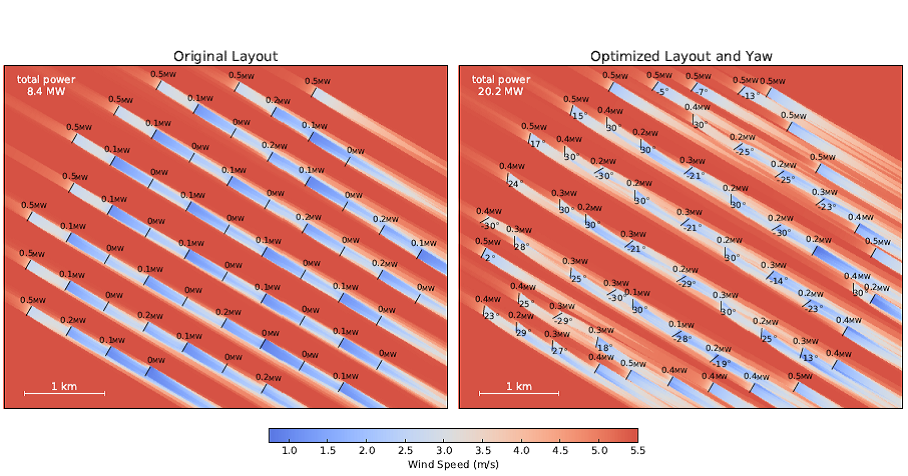NREL to Lead Novel Field Demonstration of Wind Turbine Control at the Wind Power Plant Level
The National Wind Technology Center (NWTC) at the National Renewable Energy Laboratory (NREL) teams in systems engineering and wind power plant controls have been selected to lead a novel field demonstration to improve wind energy production and help commercialize clean energy technologies.
In June 2016, the Energy Department announced that NREL will receive $1.38 million to lead four promising renewable energy projects for the Technology Commercialization Fund (TCF). The funding is part of an overall $16 million package awarded to 12 national laboratories to move clean energy technologies into the marketplace. This particular project pairs NREL with NextEra Energy Resources and Ystrategies to test wind turbine technology controls at the overall wind power plant level. This is a significant departure from the status quo, which has traditionally been to control wind power plants at the level of the individual turbines.
As part of a broader effort, and in tandem with the Technical University of Denmark’s Department of Wind Energy, NREL has been developing the Wind-Plant Integrated System Design & Engineering Model (WISDEM™). A general-purpose software tool to model wind turbines and wind power plants, WISDEM is a flexible, virtual, modular software platform with a variety of components that can be used for a variety of studies. Simulations performed with WISDEM consider several novel turbine technologies and raise questions such as, how can we design turbines in new ways? And, how can we better understand and manage uncertainties in wind power plants?
This field validation aims to answer some of those questions in a specific and unique way: by moving from simulations to demonstrations in an actual wind power plant to control the individual wind turbines at the level of the plant rather than at the level of each individual turbine, as has been done before. This field validation will improve wind power plant energy production and wind power plant controls.
According to NREL Senior Engineer Katherine Dykes, “Industry has a significant interest in this because it has a lot of potential value.”
Dykes and NREL Engineer Paul Fleming lead the NWTC team in systems engineering, which has paired with the NWTC team in wind power plant controls, led by Principal Engineer Alan Wright, and partnered with NextEra Energy Resources and Ystrategies to go beyond simulations in the lab space to field validation to demonstrate the commercial value of these technologies.
Wake steering is one type of control technology. Typically, wind turbines face directly into the prominent direction of the wind, but the wind turbines and the corresponding wind wake they create can be steered in a number of different ways. In this project, the team will use yaw control to pivot the turbines located toward the front of the wind power plant so that they are not facing directly into the wind, and the team is hoping to divert the wake so that none—or at least less—of the corresponding wake will hit the turbines downstream.
The team uses the WISDEM simulation environment to connect these wind power plant control models to a larger framework to test the benefits compared to the status quo of each turbine acting independently. Although it is likely that there will be some energy loss from the individual turbines located at the front of the plant, the goal is increased overall energy production—and thus significantly increased overall value of the wind power plant.
Dykes noted that simulations thus far have shown “improvements in energy performance upward of a percentage point or more over the course of a year. That translates into money, which can be significant.”
NextEra Energy Resources, based in Juno Beach, Florida, is the largest owner-operator of wind power plants in the United States, with the largest amount of wind capacity. Investor Ystrategies supports the TCF and the commercialization of high-value technologies through partnerships and licensing agreements.
At this time, team members are working on the details of the cooperative research and development agreement. The goal is to kick off the project in the field this fall, and demonstrations will proceed through the next calendar year.

With the NREL system modeling software, users can look at optimizing yaw control for wake steering at an existing plant, layout design for a new plant, or both yaw control and layout design at the same time. (left) A wind plant in its original layout with wind inflow from the northwest. (right) The same wind plant but with the layout and yaw control for each direction of wind inflow optimized. Further, the yaw-optimized positions for wind inflow from the northwest are shown. The wind speed of the inflow in each case is 5.5 meters per second.
Last Updated May 28, 2025
